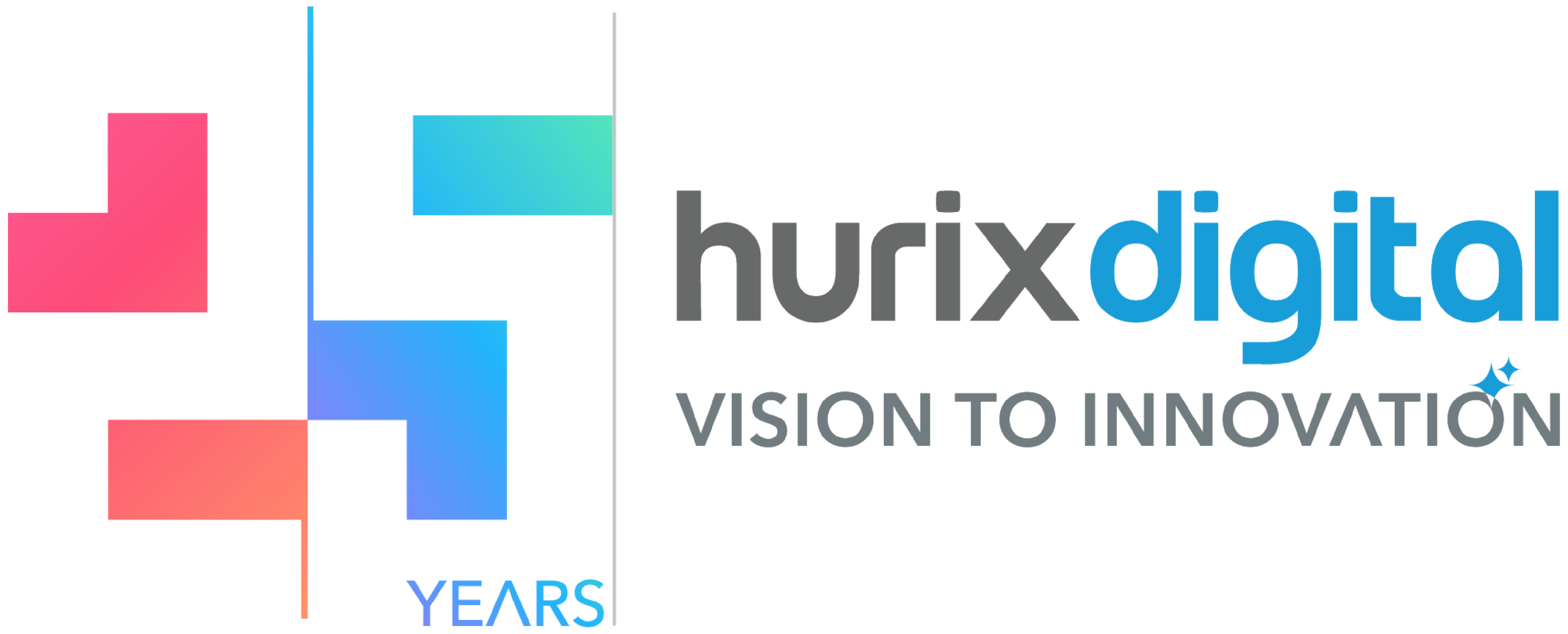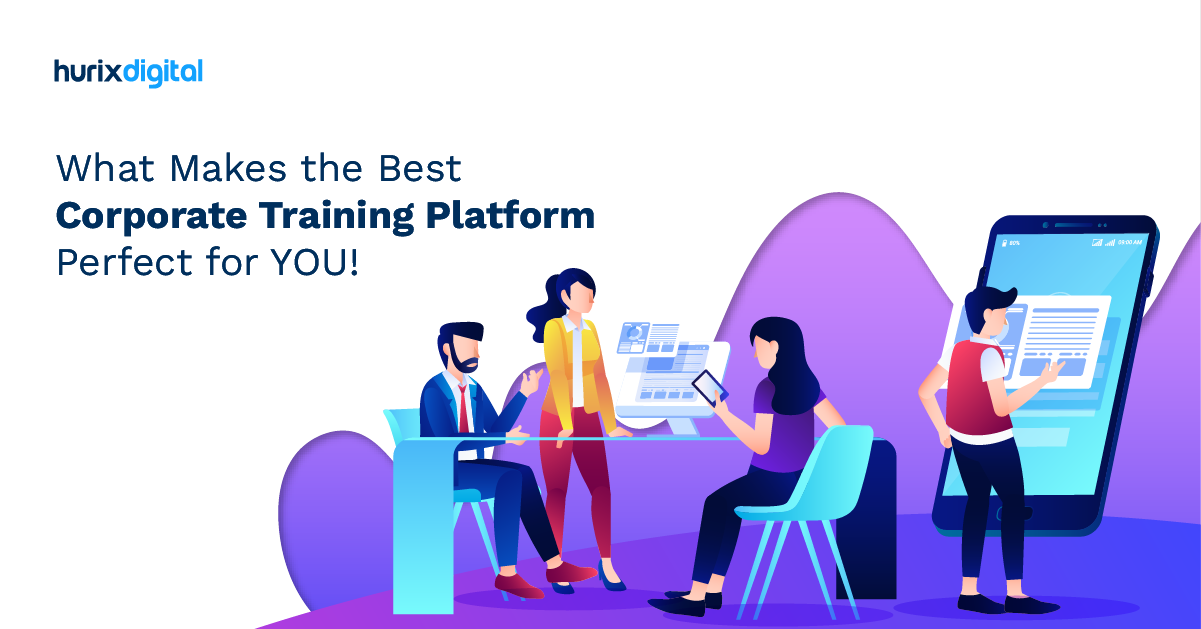
The Complete Guide to Workforce Development Strategies for Modern Businesses
Summarize with:
The global labor force faces twin challenges right now. First, there’s a talent shortage in areas companies see as most promising. Second, existing talent struggles to upskill and adapt to changing infrastructure and culture within organizations.
Here’s something that should get your attention: According to Gartner, the essential skillsets for a job are increasing by 10% each year. At the same time, 30% of skills that were necessary three years ago for the same job will now be obsolete.
Whether you run an enterprise, a startup, or a mid-sized company, upskilling your workforce has become non-negotiable. But here’s the catch: most corporate training solutions get outdated very quickly because of constant digital updates.
This guide will walk you through the challenges companies face when developing enterprise training programs and show you practical ways to overcome them. You’ll also discover current trends reshaping workforce development and learn actionable strategies to engage your employees in meaningful learning experiences.
Table of Contents:
- Why Workforce Development Matters More Than Ever
- 7 Common Challenges in Developing Effective Enterprise Training
- 6 Powerful Benefits of Workforce Development Programs
- 6 Proven Strategies to Engage Your Workforce in Learning
- 5 Workforce Development Trends Shaping the Future
- Building a Culture of Continuous Learning
- Final Word
Why Workforce Development Matters More Than Ever
Workforce development refers to upgrading the skillset and capabilities of individuals to prepare them for employment, enhance their performance in current jobs, and ensure ongoing employability in a rapidly changing job market. This includes training, education, career counseling, and other support to help employees develop necessary skills to succeed in their careers.
But why should you care? Let’s look at some compelling statistics:
The Udemy Business Platform saw total learning hours for technical skills increase by 49% in 2022 in YoY terms. The response to the pandemic has fast-forwarded digital adoption by five years, with more than 58% of the workforce reporting skill transformation since COVID-19 began.
Here’s what else the data reveals:
- A PwC survey found that 40% of workers improved their digital skills during the pandemic, and 77% are ready to learn new skills or completely retrain
- An ADP study reveals that almost 70% of employees worldwide contemplated a significant career move in 2022

7 Common Challenges in Developing Effective Enterprise Training
Below are the most common challenges that arise as a result of inadequacies posed by traditional methods.
1. Ineffective and Outdated Training Methods
When it comes to enterprise training, most companies still rely on traditional methodologies, which can be inadequate to deal with today’s remote or hybrid working environment.
According to the 2022 Training Industry report, 44% of small companies still use instructor-led training, while only 27% leverage blended learning solutions and virtual classrooms. For large companies, this number was 36% using instructor-led training, while 34% offered blended learning programs.
With teams working remotely, organizations need to adopt more hands-on and effective training methods, including instructor-led and blended or virtual learning methodologies.
This ensures that the learners get the best of self-paced learning and the benefits of a virtual classroom, ensuring they can ask relevant questions and get their doubts answered by an expert as needed.
2. Rapid Technological Advancements
The rapid pace of technological innovations has revolutionized the workplace, introducing new job roles that demand specialized and technical skills. From cybersecurity to artificial intelligence, the pace of technological innovations has surpassed the current workforce’s skills. This gap is mostly seen in sectors like manufacturing and agriculture.
The solution? Companies can break down programs into smaller courses, determining the right course for each employee based on existing skillsets, department, and level of expertise. Companies can also use gamified learning for employee training, which transforms a classroom or training program into a stimulating session. Gamified learning is effective for soft and technical skills and helps learners develop problem-solving skills in a real-world environment.
3. Complex Training Programs
Another big pain point for enterprise training programs is the learner’s inability to keep pace with the program. Most training programs seem to be focused on a particular audience or include jargon or technicalities that are challenging for a wider audience.
Organizations can create and deliver bite-sized learning and craft the program by keeping the target audience in mind to avoid training programs becoming too complex. By breaking down concepts and lessons into bite-sized nuggets, learners can access and consume the information quickly and retain the knowledge better.
4. Demographic Shifts
Demographic changes, such as an aging workforce undergoing demographic shifts, play a crucial role in exacerbating the skills gap. As experienced workers retire and move to different demographic places, there aren’t enough skilled workers to replace them. The transition is coupled with the newer generation’s different expectations and educational backgrounds. They prefer different work environments and specialized skills that the older generation possesses.
5. Difficulty Finding the Right People
When it comes to effective training, especially instructor-led courses, the onus lies in finding someone with the required expertise and experience to effectively deliver the training. Unfortunately, such people are hard to find and often busy with other requirements for the company. As a result, training programs can introduce errors or gaps without proper guidance, which are hard to fix later.
Companies can adopt hybrid training methodologies to reduce dependency on a trainer. Students can learn about a concept using a self-paced and video-based learning program while having a weekly or monthly classroom with the trainer to answer queries and get a better perspective on the concepts. This takes away the burden from an individual trainer and helps learners understand complex concepts better.
6. Inability to Provide Real-World Use Cases for Learning
Most training programs and modules focus on teaching concepts and theory about a particular subject. Unfortunately, this creates a staff that is well-versed in a particular concept but is clueless about how or where these concepts can be implemented.
While corporate training solutions leverage well-rounded workshops, presentations, seminars, e-learning modules, and video learning options, companies need to create a virtual environment where learners can test their skills in a safe environment and get a practical understanding of the concepts.
Some ways to introduce this include adapting simulation training methodologies or having quizzes or live projects after each lesson. This ensures the learner gets opportunities to put their learnings into practical use and get hands-on experience with instant feedback to perfect the skill.
7. Lack of Employee Feedback
Finally, one of the biggest impediments to effective enterprise training is the lack of feedback within organizations. Most training processes focus on one-way communication. This means that the training initiative is to tick a particular checkbox and showcase that employees are completing the course without taking any feedback from them on the program.
Without a feedback loop, even the most well-rounded training programs become ineffective in due time. Often, upgrading these programs requires simple fixes or changes, which end up piling up and making the whole program obsolete with changing times. Hence, all training programs need to understand how well the content or delivery suits each employee and use this feedback to create better experiences for the next batch.
6 Powerful Benefits of Workforce Development Programs
Investing in employee development through upskilling and reskilling programs offers a multitude of benefits for both employees and organizations. 86% of learners report that accessing learning opportunities at work makes them more likely to stay with their employer.
Benefits for Employees
- Enhanced Career Development: Continuous learning opportunities provide employees with the skills and knowledge necessary to advance their careers within the organization or pursue new opportunities outside the company.
- Increased Employability: Having a diverse skillset makes employees more marketable and adaptable to future job market demands, offering them career security and peace of mind. Personal growth through upskilling and reskilling fosters a growth mindset and encourages employees to embrace lifelong learning, leading to personal and professional fulfillment.
Benefits for Organizations
- Improved Performance and Productivity: Equipped with the latest skills and knowledge, employees can work more efficiently and effectively, leading to increased productivity and overall business growth.
- Enhanced Innovation and Creativity: By fostering a culture of continuous learning, organizations encourage employees to think outside the box and develop innovative solutions to challenges.
- Reduced Talent Shortage: Investing in your existing workforce minimizes reliance on external recruitment, saving time and resources while reducing the risk of talent gaps. By proactively upskilling and reskilling employees, organizations can prepare their workforce for future needs.
6 Proven Strategies to Engage Your Workforce in Learning
Creating courses does not guarantee your employees will enroll in them. They are swamped with their workload. Employees become invested in learning when the program is engaging and can contribute to their career advancement.
1. Understand Your Learners
Knowing the learner is the foundation of any program. It’s crucial to grasp employees’ needs, ambitions, skills, and expectations to create a learner-centric course. Employees will struggle to learn things effectively if the course content does not align with their attention, is irrelevant, and the learning of which does not offer them satisfaction.
Before you begin curating your learning program, assess the competence level of your employees. It will direct you to deliver the support they need, and your curriculum will encompass teachings that will build on their existing skill set and knowledge. A course cannot be fruitful unless the curriculum addresses what motivates the learners and what is their learning style.
2. Identify Your Workforce’s Learning Needs
An organization invests resources in curating courses for its employees. So, they do want their employees to complete them. What’s a sure-shot way to grab the learners’ attention throughout the course?
Learning new things is meaningful if the course addresses the challenges employees are struggling with, helps the employees climb the corporate ladder, intrigues them, or adds value to their lives. It’s crucial to ascertain where the gap lies in their knowledge and skills to assist your employees in navigating their challenges. Conduct one-on-one interviews to know their difficulties and what support they require to ace their game.
3. Take an Outcome-Oriented Approach
Changing economic scenarios and business trends translate to companies reworking their objectives and the outcomes they desire to witness from the learning programs they offer to the workforce. The learning objectives of the programs must align with the business objectives. Thus, a clear vision of the business lies at the foundation of the outcome-oriented approach.
Learning and development agencies must highlight what gaps in workforce knowledge they aim to bridge through their learning solutions. Individual teams in the company have to break down the organization’s goals into department goals. Learning content will differ across all departments; it will target particular processes and responsibilities of departments.
4. Make Learning an Easy Process
Let’s be honest. People are less likely to learn something if they are burdened with overwhelming concepts. An over-the-top curriculum is detrimental to learners’ confidence, and they might feel at the bottom of the class, which can compel them to quit.
If you want to see engaged learners in your courses, design them to suit everyone. Everyone has different workforce learning curves and styles. To accommodate them all, it’s vital to use an easy process. Present the material in lucid language. Follow a different set of instructions for slow and advanced learners. You could also implement visual and audio-visual means as it helps learners retain information faster.
Another way to ease new concepts is by introducing them in short sections. Divide the content into comfortable sections and conduct assessments on those individual sections before moving on to the next. The method of teaching can make or break a course. Engaging content goes hand in hand with meaningful instructions for the content.
5. Use Scenario-Based Learning
Instead of focusing on theoretical aspects of teaching, incorporate scenario-based learning. Enable your employees to implement their learnings in real-life-like situations in the learning process itself. They understand the consequences of their decisions in a simulated atmosphere. These actions do affect your business, but they do impact your employees’ decision-making skills and prepare them for the dilemmas and challenges they will face in the corporate world.
Learning solutions make it easier to understand concepts as the content builds programs using realistic business scenarios and data. Since it is role-playing, employees can safely engage in the program and work to solve problems without any repercussions. Customize business simulation scenarios so they can cater to your particular business requirements.
6. Provide Feedback and Recognition
No one will join a course before evaluating the most burning question: ‘What’s in it for me?’ Time is of the essence, and employees do have time to waste by engaging in something that will benefit them. You can make your course worthwhile by making it engaging and useful, but you need to earn the trust of the learners first.
Set clear expectations from your course. You want to sell a compelling narrative to show how powerful the program is and what impact it can make on the employees. Make a case on how the skills learned from the program will help them in their current job and help your business grow along with their interpersonal development.
Include opportunities to provide feedback to employees. Positive feedback motivates employees, and negative feedback offers them the scope to better themselves. So, any feedback leads to improved performance.
5 Workforce Development Trends Shaping the Future
The job market is a constantly evolving landscape shaped by economic, social, and technological factors. To stay competitive, both employers and employees must stay up-to-date with the latest workforce trends. Let’s take a closer look at the top trends shaping the future of work:
1. Upskilling and Reskilling Take Center Stage
Upskilling refers to the process of enhancing employees’ existing skills, while reskilling involves learning new skills to move into a different role or industry. With the rapid advancement in technology, there is an increasing demand for employees with specialized skills.
Upskilling refers to enhancing existing skills and knowledge within an employee’s current role. This might involve learning new functionalities of existing software, mastering new marketing tools, or developing deeper expertise in specific areas. Reskilling empowers employees to take on entirely new challenges, potentially transforming a customer service representative into a software developer or an accountant into a financial analyst.
2. Design Training for a Distributed Workforce
The COVID-19 pandemic accelerated the trend of hiring a remote workforce. Remote work offers several benefits, including flexible work hours, cost savings, and the ability to tap into a global talent pool. Given the opportunity to work remotely, 87% of employees accept the offer, according to McKinsey.
A study found that 30% of employees regarded themselves as a hybrid workforce, whereas 35% of employees worked remotely. This percentage is sure to rise in the future. This trend can be a major challenge in delivering knowledge due to several issues, such as device or platform compatibility, employee distraction, and internet connectivity.
3. Artificial Intelligence Transforms Learning
Artificial intelligence (AI) is playing a significant role in workforce development by helping identify skill gaps, providing personalized training and upskilling opportunities, and streamlining recruitment and onboarding processes. AI can also help automate routine and repetitive tasks, allowing employees to focus on more complex and creative work.
Additionally, AI-powered analytics can provide insights into workforce performance and productivity, enabling organizations to make data-driven decisions about training and development programs. AI can help learners pick articles from a curated content pool to ensure learners will come back for more even after completing a particular course.
4. Emphasis on Diversity and Inclusion
Did you know that 48% of Gen Z are ethnic or racial minorities? Diversity and inclusion are becoming increasingly important in the workforce. It is a major driver of cash flow in any organization.
As companies are recognizing the value of a diverse workforce, they are making efforts to create inclusive learning environments where employees from all backgrounds can thrive. Workforce development programs prioritize inclusion and diversity by reaching out to underrepresented groups, such as minorities and disabled individuals. They tailor their programs to address the unique needs and challenges faced by these populations, thereby promoting equity in the workplace and expanding the talent pool.
5. Focus on Mental Health
Mental health has become a top priority for companies, as employees are struggling with stress, burnout, and other mental health issues. Promoting mental health in the workplace leads to increased job satisfaction, engagement, creativity, and innovation.
Employers can support mental health in the workforce by providing access to resources such as flexible work arrangements and employee assistance programs. Training managers and colleagues to recognize and respond to mental health concerns can help create a more supportive and inclusive workplace culture.
Building a Culture of Continuous Learning
74% of employees have said that the lack of professional development and growth in their current roles has led to the lack of them attaining higher potential. Implementing successful upskilling and reskilling programs requires a strategic and multifaceted approach:
- Identify Skill Gaps: Regularly assess your workforce’s skillsets and identify areas where upskilling or reskilling is necessary to meet future business goals. Understanding your business objectives and setting a roadmap of what you wish your employees to achieve at the end of the training program is fundamental to curating customized learning solutions.
- Develop Tailored Programs: Design professional training programs that cater to the specific needs of individual employees and align with overall company objectives. Study the existing learning materials and identify their shortcomings. It will enable you to articulate your needs better to people designing your learning solutions.
- Offer Diverse Learning Formats: Utilize various learning methods, including online learning platforms, workshops, and mentorship programs, to cater to different learning styles and preferences. Learning style determines the approach to delivering the course—whether it will be auditory, verbal, or audio-visual.
Final Word
Workforce development is about preparing employees for the future and creating a better future for everyone. By investing in the development of their employees, companies can create a more productive, innovative, and inclusive workforce that drives success for both the employees and the company.
Companies can work with learning technology service providers like Hurix Digital, who provide exemplary solutions to make enterprise training effective and efficient. Hurix Digital is a leading company that can help businesses across industries achieve their business goals by providing them with future-ready e-learning content solutions, content transformation, cloud platforms, and technology services.
Ready to transform your organization’s learning and development with custom eLearning solutions? To know more about how you can take your enterprise training to the next level, explore the learning technology services by Hurix Digital or get in touch with us today!
Summarize with:

Senior Vice President
A Business Development professional with >20 years of experience with strong capability to sell new solutions and develop new markets from scratch. New Market Entry Specialist with experience working in the largest emerging markets. Exceptional experience in conceptualizing, ideating and selling new learning technologies like VR AR, etc. across multiple industry verticals.
 Upcoming Masterclass | Build an Army of Brand Evangelists using Training & Development | November 20th, 8:30 AM PDT | 11:30 AM EDT | 10:00 PM IST
Upcoming Masterclass | Build an Army of Brand Evangelists using Training & Development | November 20th, 8:30 AM PDT | 11:30 AM EDT | 10:00 PM IST




